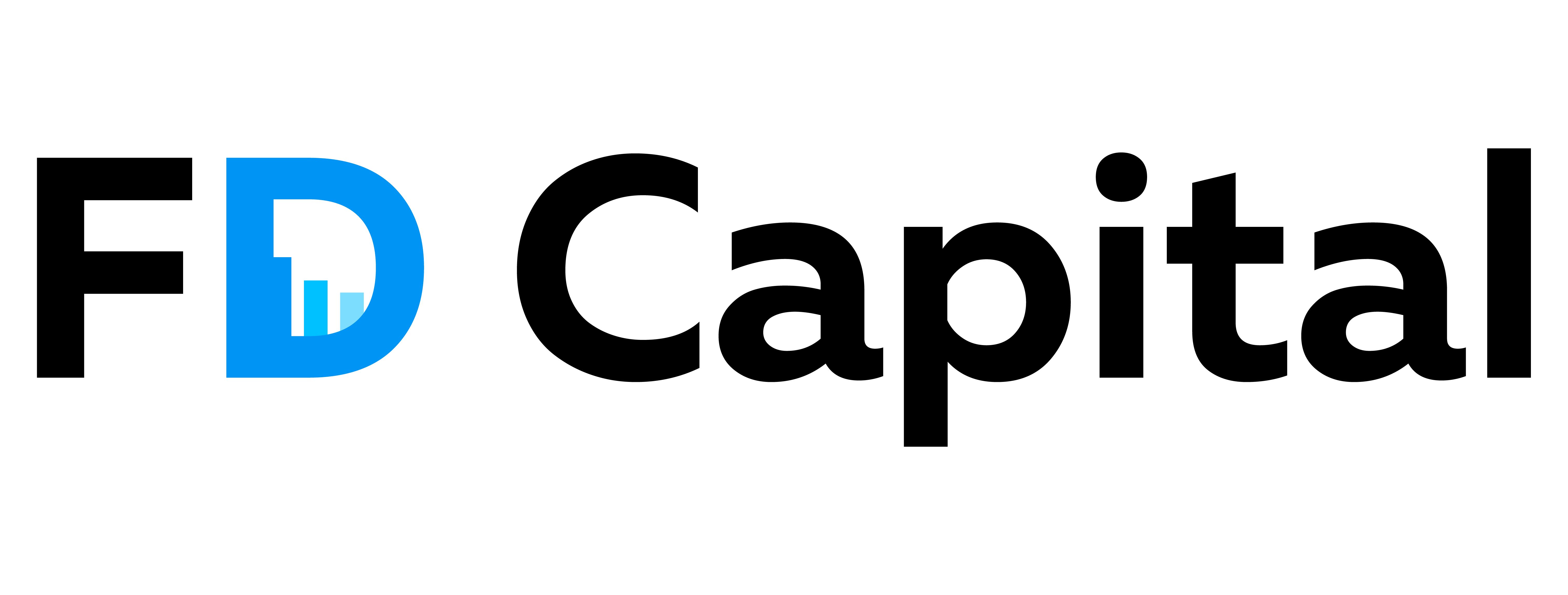Debt vs Equity: Why Debt May Provide Greater Flexibility for Business Expansion

Debt vs Equity: Why Debt May Provide Greater Flexibility for Business Expansion
Introduction
In the dynamic landscape of business expansion, companies are often faced with the critical decision of choosing between debt and equity financing. This choice can significantly impact a company’s growth trajectory, operational flexibility, and financial health. While both financing options have their merits, debt financing is increasingly being recognized for its potential to offer greater flexibility for business expansion. This article delves into the reasons why debt may be a more advantageous option for businesses looking to expand, exploring the nuances of financial leverage, control retention, and cost efficiency. By understanding the strategic benefits of debt financing, businesses can make informed decisions that align with their long-term growth objectives.
Understanding Debt and Equity Financing
Definition of Debt Financing
Debt financing involves borrowing money from external sources with the agreement to repay the principal amount along with interest over a specified period. This form of financing is typically obtained through loans, bonds, or credit lines. The lender does not gain ownership in the company, and the business is obligated to make regular interest payments and repay the principal by the maturity date.
Definition of Equity Financing
Equity financing involves raising capital by selling shares of the company to investors. This method does not require repayment of funds, but it does involve giving up a portion of ownership and control. Investors who purchase equity become shareholders and have a claim on future earnings and, in some cases, decision-making power within the company.
Key Characteristics of Debt Financing
Obligation to Repay
Debt financing requires the borrower to repay the borrowed amount with interest, regardless of the company’s financial performance. This creates a fixed financial obligation that must be met.
Interest Payments
Interest payments on debt are typically tax-deductible, which can provide a tax advantage to the borrowing company. The interest rate and terms of repayment are usually predetermined and outlined in the loan agreement.
No Ownership Dilution
Since debt does not involve selling shares, it does not dilute the ownership of existing shareholders. The control and decision-making power remain with the current owners and management.
Impact on Credit Rating
The company’s ability to secure future financing can be affected by its credit rating, which is influenced by its debt levels and repayment history. High levels of debt can lead to a lower credit rating, potentially increasing the cost of future borrowing.
Key Characteristics of Equity Financing
No Repayment Obligation
Equity financing does not require repayment of the capital raised. Instead, investors expect to earn a return through dividends and capital gains as the company grows and becomes more profitable.
Ownership and Control
Issuing equity involves selling a portion of the company’s ownership to investors. This can lead to dilution of control for existing owners, as new shareholders may have voting rights and influence over company decisions.
Potential for Higher Returns
Equity investors typically seek higher returns on their investment, as they are taking on more risk compared to debt investors. The potential for significant capital appreciation can attract investors looking for growth opportunities.
Impact on Financial Flexibility
Equity financing can enhance a company’s financial flexibility by providing capital without increasing debt levels. This can be particularly advantageous for businesses with uncertain cash flows or those in high-growth industries.
Comparison of Debt and Equity Financing
Cost of Capital
Debt financing generally has a lower cost of capital compared to equity, as interest payments are tax-deductible and lenders assume less risk than equity investors. However, excessive debt can increase financial risk and lead to higher borrowing costs.
Risk and Return
Debt financing is considered less risky for investors, as it involves fixed interest payments and priority in case of liquidation. Equity investors face higher risk but have the potential for greater returns through dividends and capital gains.
Impact on Cash Flow
Debt financing requires regular interest payments, which can impact a company’s cash flow, especially if revenues are inconsistent. Equity financing does not impose such obligations, allowing more flexibility in cash management.
Strategic Considerations
The choice between debt and equity financing depends on various strategic considerations, including the company’s growth stage, industry dynamics, and financial health. Companies may opt for a balanced approach, using a mix of both debt and equity to optimize their capital structure.
The Role of Debt in Business Expansion
Access to Capital
Debt financing provides businesses with immediate access to capital, which is crucial for expansion. This capital can be used to invest in new projects, purchase equipment, or enter new markets. Unlike equity financing, where raising funds might require giving up a portion of ownership, debt allows businesses to retain full control while still obtaining the necessary resources for growth.
Predictable Repayment Structure
Debt financing typically comes with a predictable repayment schedule, which can be beneficial for financial planning. Businesses can forecast their cash flows more accurately, knowing the exact amount and timing of debt repayments. This predictability allows companies to manage their finances more effectively and allocate resources towards expansion activities without unexpected financial burdens.
Tax Advantages
Interest payments on debt are often tax-deductible, which can reduce the overall cost of borrowing. This tax advantage makes debt a more attractive option for financing business expansion compared to equity, where dividends paid to shareholders are not tax-deductible. The tax savings from interest deductions can be reinvested into the business, further supporting growth initiatives.
Leveraging Existing Assets
Businesses can use their existing assets as collateral to secure debt financing. This leverage allows companies to access larger amounts of capital than they might be able to raise through equity alone. By using assets as security, businesses can negotiate better terms and interest rates, making debt a cost-effective option for funding expansion.
Maintaining Ownership and Control
One of the significant advantages of using debt for business expansion is that it allows owners to maintain full ownership and control of the company. Unlike equity financing, which requires giving up a portion of ownership to investors, debt does not dilute the ownership stake. This is particularly important for entrepreneurs who wish to retain decision-making authority and strategic direction over their business.
Flexibility in Financing Options
Debt financing offers a variety of options, including term loans, lines of credit, and bonds, each with different terms and conditions. This flexibility allows businesses to choose the type of debt that best suits their expansion needs and financial situation. Companies can tailor their debt structure to align with their cash flow patterns and growth objectives, ensuring that the financing supports rather than hinders their expansion plans.
Enhancing Creditworthiness
Successfully managing debt can enhance a company’s creditworthiness, making it easier to access additional financing in the future. A strong credit history demonstrates to lenders that the business is capable of meeting its financial obligations, which can lead to more favorable terms and lower interest rates on future debt. This improved credit profile can be a valuable asset as the business continues to expand and seek new opportunities.
Advantages of Debt Financing Over Equity
Ownership Retention
One of the most significant advantages of debt financing is that it allows business owners to retain full ownership and control of their company. When a business opts for equity financing, it must sell a portion of its ownership to investors, which can dilute the control of the original owners. Debt financing, on the other hand, involves borrowing money that must be repaid over time, but it does not require giving up any ownership stake. This means that business owners can make decisions independently without needing to consult with or gain approval from equity investors.
Tax Benefits
Debt financing offers tax advantages that can make it more attractive than equity financing. Interest payments on debt are typically tax-deductible, which can reduce the overall taxable income of a business. This deduction can lead to significant tax savings, effectively lowering the cost of borrowing. In contrast, dividends paid to equity investors are not tax-deductible, which can make equity financing more expensive from a tax perspective.
Predictable Repayment Schedule
Debt financing provides a clear and predictable repayment schedule, which can aid in financial planning and budgeting. Businesses know exactly how much they need to pay each month and for how long, allowing them to manage their cash flow more effectively. This predictability can be particularly beneficial for businesses with steady revenue streams, as it enables them to plan for future expenses and investments with greater certainty.
No Profit Sharing
With debt financing, businesses are not required to share their profits with lenders. Once the debt is repaid, the obligation to the lender ends, and the business retains all future profits. In contrast, equity financing often involves sharing a portion of the company’s profits with investors in the form of dividends. This can reduce the amount of profit available for reinvestment in the business or distribution to the original owners.
Flexibility in Use of Funds
Debt financing can offer greater flexibility in how funds are used compared to equity financing. Lenders are generally more concerned with the borrower’s ability to repay the loan rather than how the funds are used, as long as the business remains solvent. This allows businesses to allocate funds according to their strategic priorities without needing to justify their decisions to equity investors, who may have different expectations or priorities.
Potential for Lower Cost of Capital
In some cases, debt financing can be a cheaper source of capital compared to equity. The cost of debt is often lower than the cost of equity because lenders take on less risk than equity investors. Lenders are typically entitled to fixed interest payments and have a higher claim on assets in the event of liquidation. This lower risk can translate into lower interest rates, making debt a more cost-effective option for financing business expansion.
Enhanced Financial Discipline
Taking on debt can instill a sense of financial discipline within a business. The obligation to make regular interest and principal payments can encourage businesses to manage their finances more prudently, focusing on generating sufficient cash flow to meet their debt obligations. This discipline can lead to more efficient operations and better financial management practices, which can be beneficial for long-term business growth.
Flexibility in Debt Financing
Customizable Terms
Debt financing offers businesses the ability to negotiate terms that align with their specific needs and financial situation. Companies can work with lenders to determine the loan amount, interest rate, repayment schedule, and covenants. This customization allows businesses to tailor their debt obligations to match their cash flow patterns and growth projections, providing a level of flexibility that can be crucial for expansion.
Retention of Ownership
One of the most significant advantages of debt financing is that it allows business owners to retain full control over their company. Unlike equity financing, which requires giving up a portion of ownership and decision-making power, debt financing enables businesses to access the necessary capital without diluting ownership. This retention of control can be particularly important for businesses that have a clear vision for their expansion and want to maintain strategic direction.
Predictable Costs
Debt financing typically involves fixed interest rates and set repayment schedules, which can provide businesses with predictable costs over the life of the loan. This predictability allows companies to plan their finances more effectively, ensuring that they can meet their debt obligations while still investing in growth opportunities. The ability to forecast expenses accurately can be a significant advantage when managing cash flow and budgeting for expansion.
Tax Benefits
Interest payments on debt are generally tax-deductible, which can reduce the overall cost of borrowing. This tax advantage can make debt financing a more attractive option for businesses looking to expand, as it effectively lowers the cost of capital. By reducing taxable income, companies can retain more of their earnings to reinvest in growth initiatives.
Access to Larger Amounts of Capital
Debt financing can provide businesses with access to larger amounts of capital than they might be able to secure through equity financing alone. This access to substantial funding can be critical for businesses looking to undertake significant expansion projects, such as entering new markets, acquiring other companies, or investing in large-scale infrastructure. The ability to secure the necessary capital can enable businesses to pursue growth opportunities that might otherwise be out of reach.
Short-Term and Long-Term Options
Debt financing offers a range of options that can be tailored to meet both short-term and long-term needs. Businesses can choose from various types of debt instruments, such as lines of credit, term loans, and bonds, each with different maturities and repayment structures. This variety allows companies to select the type of debt that best aligns with their expansion timeline and financial strategy, providing flexibility in how they manage their capital structure.
Risks and Considerations of Debt Financing
Interest Obligations
Debt financing requires businesses to make regular interest payments, which can strain cash flow, especially for companies with inconsistent revenue streams. The obligation to pay interest regardless of business performance can limit financial flexibility and impact the ability to reinvest profits into growth opportunities.
Creditworthiness and Collateral
Securing debt often depends on the company’s creditworthiness. Businesses with poor credit ratings may face higher interest rates or may not qualify for loans at all. Lenders may also require collateral, putting company assets at risk if the business fails to meet its debt obligations.
Impact on Cash Flow
Debt repayments are fixed obligations that must be met, which can affect a company’s cash flow. This can be particularly challenging during economic downturns or periods of low revenue, potentially leading to liquidity issues. Companies must carefully manage their cash flow to ensure they can meet their debt obligations without compromising operational needs.
Financial Covenants
Lenders may impose financial covenants as part of the debt agreement, which can restrict a company’s operational flexibility. These covenants might include maintaining certain financial ratios or limits on additional borrowing. Breaching these covenants can lead to penalties or even loan default, which can have severe consequences for the business.
Risk of Overleveraging
Excessive reliance on debt can lead to overleveraging, where the company has more debt than it can manage. This increases financial risk and can lead to insolvency if the business cannot generate sufficient revenue to cover its debt obligations. Overleveraging can also deter potential investors and affect the company’s credit rating.
Interest Rate Fluctuations
Variable interest rate loans expose businesses to the risk of interest rate fluctuations. An increase in interest rates can lead to higher debt servicing costs, affecting profitability and financial stability. Companies must consider the potential impact of interest rate changes when opting for variable rate debt.
Impact on Credit Rating
Taking on significant debt can affect a company’s credit rating. A lower credit rating can increase the cost of future borrowing and limit access to additional financing. Maintaining a healthy balance between debt and equity is crucial to preserving a favorable credit rating.
Potential for Bankruptcy
In extreme cases, failure to manage debt effectively can lead to bankruptcy. If a company cannot meet its debt obligations, creditors may take legal action to recover their funds, potentially leading to the liquidation of assets and the end of the business. This underscores the importance of prudent debt management and strategic financial planning.
Case Studies: Successful Business Expansions Using Debt
Starbucks: Strategic Growth Through Debt Financing
Starbucks, the global coffeehouse chain, is a prime example of a company that has successfully utilized debt to fuel its expansion. In the early 2000s, Starbucks embarked on an aggressive growth strategy, opening new stores across the globe. To finance this expansion, the company issued corporate bonds, taking advantage of low-interest rates to secure favorable terms. This strategic use of debt allowed Starbucks to maintain control over its operations and decision-making processes, as opposed to diluting ownership through equity financing. The infusion of capital enabled Starbucks to invest in new markets, enhance its supply chain, and innovate its product offerings, ultimately leading to significant revenue growth and increased market share.
Apple Inc.: Leveraging Debt for Shareholder Value and Expansion
Apple Inc., known for its innovative products and strong brand, has also effectively used debt to support its business objectives. In 2013, Apple issued bonds to raise $17 billion, marking one of the largest corporate bond sales at the time. The company used the proceeds not only for stock buybacks and dividends but also to fund its expansion into new product lines and markets. By opting for debt financing, Apple was able to take advantage of historically low-interest rates while preserving its substantial cash reserves. This strategic move allowed Apple to continue investing in research and development, expand its retail presence, and enhance its supply chain capabilities, contributing to its sustained growth and profitability.
Amazon: Debt-Fueled Expansion and Infrastructure Development
Amazon, the e-commerce giant, has consistently used debt to finance its rapid expansion and infrastructure development. Over the years, Amazon has issued several rounds of corporate bonds to fund the construction of fulfillment centers, technology infrastructure, and acquisitions. This approach has enabled Amazon to scale its operations quickly and efficiently, meeting the growing demand for its services. By leveraging debt, Amazon has been able to invest heavily in logistics and technology, which are critical to its business model. The strategic use of debt has played a crucial role in Amazon’s ability to expand its product offerings, enter new markets, and maintain its competitive edge in the e-commerce industry.
Netflix: Expanding Content Library Through Debt Financing
Netflix, the streaming service provider, has utilized debt to finance its ambitious content expansion strategy. Recognizing the importance of original content in attracting and retaining subscribers, Netflix has raised billions of dollars through debt offerings to fund the production of original series and films. This approach has allowed Netflix to rapidly expand its content library, catering to diverse audiences and preferences. By using debt financing, Netflix has been able to invest in high-quality productions without diluting shareholder equity. The success of this strategy is evident in Netflix’s growing subscriber base and its position as a leader in the streaming industry.
Tesla: Accelerating Growth with Strategic Debt Use
Tesla, the electric vehicle manufacturer, has strategically used debt to accelerate its growth and innovation. In its early years, Tesla issued convertible debt to raise capital for the development of its electric vehicles and the expansion of its manufacturing capabilities. This financing approach provided Tesla with the necessary funds to invest in research and development, build production facilities, and scale its operations. The use of debt allowed Tesla to maintain control over its vision and direction while pursuing its ambitious growth targets. As a result, Tesla has become a dominant player in the automotive industry, known for its cutting-edge technology and sustainable energy solutions.
Conclusion
Recap of Debt vs Equity
Debt and equity financing each offer unique benefits and challenges for businesses seeking expansion. While equity involves selling a portion of ownership, debt allows companies to retain full control while leveraging borrowed funds for growth.
Key Advantages of Debt Financing
Debt financing provides several advantages over equity, including tax benefits, retention of ownership, and predictable repayment schedules. These factors contribute to its appeal for businesses aiming to expand without diluting ownership.
Flexibility in Business Expansion
The flexibility offered by debt financing is a significant advantage for businesses. It allows for tailored repayment plans and the ability to leverage existing assets, enabling companies to strategically manage their growth and financial commitments.
Considerations and Risks
While debt financing offers numerous benefits, it is not without risks. Businesses must carefully assess their ability to meet repayment obligations and consider the potential impact on cash flow and financial stability.
Insights from Case Studies
Case studies of successful business expansions using debt financing highlight its potential to drive growth while maintaining control. These examples demonstrate how strategic use of debt can facilitate expansion and enhance competitive positioning.

Adrian Lawrence FCA with over 25 years of experience as a finance leader and a Chartered Accountant, BSc graduate from Queen Mary College, University of London.
I help my clients achieve their growth and success goals by delivering value and results in areas such as Financial Modelling, Finance Raising, M&A, Due Diligence, cash flow management, and reporting. I am passionate about supporting SMEs and entrepreneurs with reliable and professional Chief Financial Officer or Finance Director services.












